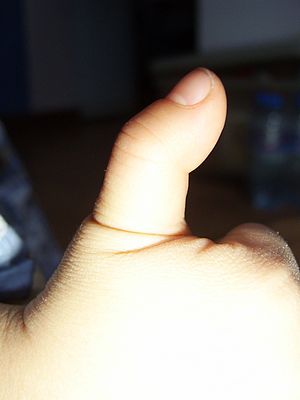Tenosynovitis
| Tenosynovitis | |
|---|---|
 |
|
| Classification and external resources | |
| Specialty | rheumatology |
| ICD-10 | M65 |
| ICD-9-CM | 727.0 |
| DiseasesDB | 31136 |
| MedlinePlus | 001242 |
| eMedicine | emerg/571 |
| MeSH | D013717 |
Tenosynovitis is the inflammation of the fluid-filled sheath (called the synovium) that surrounds a tendon. Symptoms of tenosynovitis include pain, swelling and difficulty moving the particular joint where the inflammation occurs. When the condition causes the finger to "stick" in a flexed position, this is called "stenosing" tenosynovitis, commonly known as "trigger finger". This condition often presents with comorbid tendinitis.
Tenosynovitis most commonly results from the introduction of bacteria into a sheath through a small penetrating wound such as that made by the point of needle or thorn. Repeated use of hand tools can precede the condition, as well as arthritis or injury. Tenosynovitis sometimes runs in families and is generally seen more often in females than in males. The causes for children are even less well known and have a recurrence rate of less than 1-5% after treatment.
Tenosynovitis is also linked to infectious arthritis caused by bacteria such as Neisseria gonorrhoeae.
A physical examination shows swelling over the involved tendon. The health care provider may touch or stretch the tendon or have the patient move the muscle to which it is attached to see whether the patient experiences pain.
The mainstay of treatment for tenosynovitis includes symptom alleviation, antibiotic therapy, and surgery. Mild tenosynovitis causing small scale swelling can be treated with non-steroidal anti-inflammatory drugs (NSAIDs) such as Naproxen, ibuprofen or diclofenac (marketed as Voltaren and other trade names), taken to reduce inflammation and as an analgesic. Resting the affected tendons is essential for recovery; a brace is often recommended. Physical or occupational therapy may also be beneficial in reducing symptoms.
...
Wikipedia
